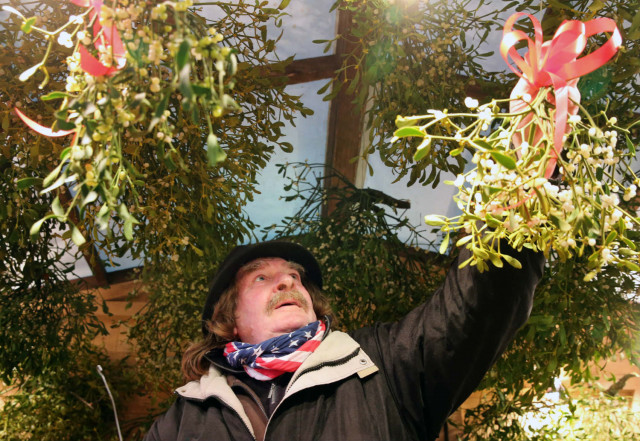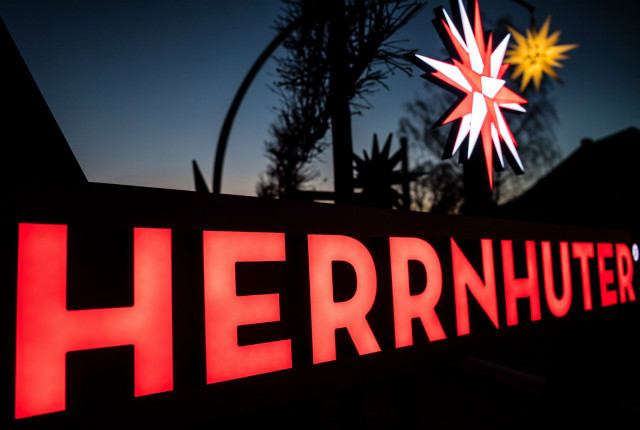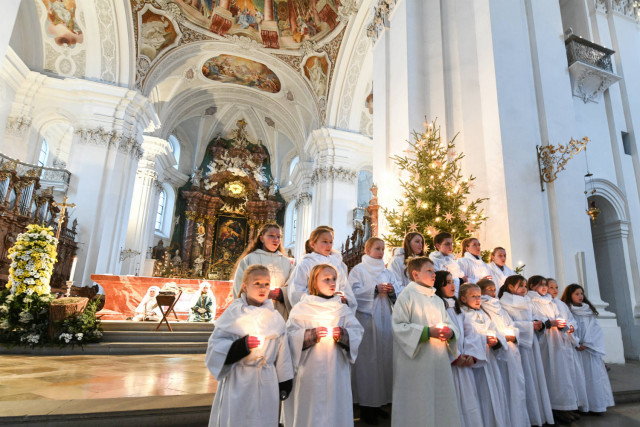What's the history behind Germany's Christmas traditions?

We look into some holiday traditions and explain their significance to Germany.
Some things are synonymous with Christmas: the tree, opening presents, the songs. However, although some are centuries-old traditions, some of these customs are newer than you might expect.
We break down the origins of some beloved signs of Christmas and explain their significance to Germany.
 Christmas trees can be purchased in many places across Germany: at farms or on city streets, even delivered to your door. Photo: DPA.
Christmas trees can be purchased in many places across Germany: at farms or on city streets, even delivered to your door. Photo: DPA.
Christmas Tree (Weihnachtsbaum, Tannenbaum): This ultimate item of Christmas decor probably has its origin as a “paradise tree” in the nativity plays of the Middle Ages. The first record of a Christmas tree is from 1605 in Strasbourg.
Candles came a bit later in the same century. Christmas trees have been part of the celebration in German living rooms since the middle of the 19th century.
READ ALSO: What you should know about German Christmas trees
Tree Decorations (Baumschmuck): The tree is decorated (on Christmas Eve at the latest) with candles, baubles, ornaments, and tinsel. In the USA, one might find pickle-shaped ornaments for sale claiming to be ‘an old tradition from Germany.’ Legend goes that whoever spots the pickle between the branches receives an extra gift. While many Christmas shops have caught on to the trend and sell such ornaments in Germany, most Germans will not recognize the custom.
READ ALSO: Are Christmas pickle ornaments really a German tradition?
Gifts (Geschenke): Up until the Reformation, children received gifts on St. Nikolaus Day, which occurs every year on December 6th. Martin Luther and his followers wanted to break with the veneration of the saints and urged for the Christkind to become the gift giver. Now, children receive gifts from either the Christkind or the Weihnachtsmann (Santa Claus) depending on which region of Germany they live in—now several weeks later on December 24th.
READ ALSO: Christkind or Santa? A nation divided
Santa Claus (Weihnachtsmann): There are many different visual representations of Santa Claus to be found in Germany and around the world. The best-known image of a plump man in a red and white suit is largely the work of a Coca-Cola advertising campaign from 1931. Other nicknames for Santa come from original German customs as well: Kris Kringle from Christkind and St. Nick from St. Nikolaus.
 A man sells Mistletoe in Rostock. Photo: DPA.
A man sells Mistletoe in Rostock. Photo: DPA.
Mistletoe (Mistelzweig): Kissing under the mistletoe is a Christmas tradition that probably came to mainland Europe from prudish Victorian England. It has its origins in Celtic customs. Mistletoe can be found at most Christmas markets and grocery stores in Germany during the holiday season.
READ ALSO: How to prepare for Christmas like a German
 Moravian stars are still produced at a factory in Saxony. Photo: DPA.
Moravian stars are still produced at a factory in Saxony. Photo: DPA.
Moravian star (Herrnhuter Stern): These multi-pointed stars which can be found adorning houses, churches, and the stalls of Christmas markets originated in a Christian boarding school at the beginning of the 19th century. They came from the Herrnhut community in southeast Saxony and were also exported by the GDR and easily shipped around the world, as they can be dismantled and packed flat.
Christmas songs (Weihnachtslieder): A list of popular Christmas songs in Germany saw “Silent Night” came out on top with 44 percent. The next best were a mix of classics such as “O Tannenbaum” or “King, Glöckchen, klingelingeling” and newer hits like “White Christmas” or “Last Christmas.”
READ ALSO: Throwback: "Last Christmas" in Germany
Christmas food (Weihnachtsessen): When it comes to eating on Christmas, each region has its own customs. Most families also have their own traditions. For most, home-cooked meals are a must. In a recent survey by YouGov, only 26 percent of Germans said they could ever imagine visiting a restaurant on Christmas.
READ ALSO: Christmas goose?
 A youth choir sings at a Christmas service in Baden-Württemburg. Photo: DPA.
A youth choir sings at a Christmas service in Baden-Württemburg. Photo: DPA.
Church service (Gottesdienst): Christmas services, whether on Christmas Eve or early morning on Christmas Day, are among the best attended events of the major churches in Germany. The Catholic churches are known to provide a ‘cheat sheet’ for those who are not used to attending services. The first piece of advice? ‘The church could get full: come early enough.’
And what about Germany's beloved Christmas markets? Check out our story on the history of markets to find out the history of this tradition.
Translated by Kate Brady.
Comments
See Also
Some things are synonymous with Christmas: the tree, opening presents, the songs. However, although some are centuries-old traditions, some of these customs are newer than you might expect.
We break down the origins of some beloved signs of Christmas and explain their significance to Germany.
 Christmas trees can be purchased in many places across Germany: at farms or on city streets, even delivered to your door. Photo: DPA.
Christmas trees can be purchased in many places across Germany: at farms or on city streets, even delivered to your door. Photo: DPA.
Christmas Tree (Weihnachtsbaum, Tannenbaum): This ultimate item of Christmas decor probably has its origin as a “paradise tree” in the nativity plays of the Middle Ages. The first record of a Christmas tree is from 1605 in Strasbourg.
Candles came a bit later in the same century. Christmas trees have been part of the celebration in German living rooms since the middle of the 19th century.
READ ALSO: What you should know about German Christmas trees
Tree Decorations (Baumschmuck): The tree is decorated (on Christmas Eve at the latest) with candles, baubles, ornaments, and tinsel. In the USA, one might find pickle-shaped ornaments for sale claiming to be ‘an old tradition from Germany.’ Legend goes that whoever spots the pickle between the branches receives an extra gift. While many Christmas shops have caught on to the trend and sell such ornaments in Germany, most Germans will not recognize the custom.
READ ALSO: Are Christmas pickle ornaments really a German tradition?
Gifts (Geschenke): Up until the Reformation, children received gifts on St. Nikolaus Day, which occurs every year on December 6th. Martin Luther and his followers wanted to break with the veneration of the saints and urged for the Christkind to become the gift giver. Now, children receive gifts from either the Christkind or the Weihnachtsmann (Santa Claus) depending on which region of Germany they live in—now several weeks later on December 24th.
READ ALSO: Christkind or Santa? A nation divided
Santa Claus (Weihnachtsmann): There are many different visual representations of Santa Claus to be found in Germany and around the world. The best-known image of a plump man in a red and white suit is largely the work of a Coca-Cola advertising campaign from 1931. Other nicknames for Santa come from original German customs as well: Kris Kringle from Christkind and St. Nick from St. Nikolaus.
 A man sells Mistletoe in Rostock. Photo: DPA.
A man sells Mistletoe in Rostock. Photo: DPA.
Mistletoe (Mistelzweig): Kissing under the mistletoe is a Christmas tradition that probably came to mainland Europe from prudish Victorian England. It has its origins in Celtic customs. Mistletoe can be found at most Christmas markets and grocery stores in Germany during the holiday season.
READ ALSO: How to prepare for Christmas like a German
 Moravian stars are still produced at a factory in Saxony. Photo: DPA.
Moravian stars are still produced at a factory in Saxony. Photo: DPA.
Moravian star (Herrnhuter Stern): These multi-pointed stars which can be found adorning houses, churches, and the stalls of Christmas markets originated in a Christian boarding school at the beginning of the 19th century. They came from the Herrnhut community in southeast Saxony and were also exported by the GDR and easily shipped around the world, as they can be dismantled and packed flat.
Christmas songs (Weihnachtslieder): A list of popular Christmas songs in Germany saw “Silent Night” came out on top with 44 percent. The next best were a mix of classics such as “O Tannenbaum” or “King, Glöckchen, klingelingeling” and newer hits like “White Christmas” or “Last Christmas.”
READ ALSO: Throwback: "Last Christmas" in Germany
Christmas food (Weihnachtsessen): When it comes to eating on Christmas, each region has its own customs. Most families also have their own traditions. For most, home-cooked meals are a must. In a recent survey by YouGov, only 26 percent of Germans said they could ever imagine visiting a restaurant on Christmas.
READ ALSO: Christmas goose?
 A youth choir sings at a Christmas service in Baden-Württemburg. Photo: DPA.
A youth choir sings at a Christmas service in Baden-Württemburg. Photo: DPA.
Church service (Gottesdienst): Christmas services, whether on Christmas Eve or early morning on Christmas Day, are among the best attended events of the major churches in Germany. The Catholic churches are known to provide a ‘cheat sheet’ for those who are not used to attending services. The first piece of advice? ‘The church could get full: come early enough.’
And what about Germany's beloved Christmas markets? Check out our story on the history of markets to find out the history of this tradition.
Translated by Kate Brady.
Join the conversation in our comments section below. Share your own views and experience and if you have a question or suggestion for our journalists then email us at [email protected].
Please keep comments civil, constructive and on topic – and make sure to read our terms of use before getting involved.
Please log in here to leave a comment.